-
 Bitcoin
Bitcoin $106,754.6083
1.33% -
 Ethereum
Ethereum $2,625.8249
3.80% -
 Tether USDt
Tether USDt $1.0001
-0.03% -
 XRP
XRP $2.1891
1.67% -
 BNB
BNB $654.5220
0.66% -
 Solana
Solana $156.9428
7.28% -
 USDC
USDC $0.9998
0.00% -
 Dogecoin
Dogecoin $0.1780
1.14% -
 TRON
TRON $0.2706
-0.16% -
 Cardano
Cardano $0.6470
2.77% -
 Hyperliquid
Hyperliquid $44.6467
10.24% -
 Sui
Sui $3.1128
3.86% -
 Bitcoin Cash
Bitcoin Cash $455.7646
3.00% -
 Chainlink
Chainlink $13.6858
4.08% -
 UNUS SED LEO
UNUS SED LEO $9.2682
0.21% -
 Avalanche
Avalanche $19.7433
3.79% -
 Stellar
Stellar $0.2616
1.64% -
 Toncoin
Toncoin $3.0222
2.19% -
 Shiba Inu
Shiba Inu $0.0...01220
1.49% -
 Hedera
Hedera $0.1580
2.75% -
 Litecoin
Litecoin $87.4964
2.29% -
 Polkadot
Polkadot $3.8958
3.05% -
 Ethena USDe
Ethena USDe $1.0000
-0.04% -
 Monero
Monero $317.2263
0.26% -
 Bitget Token
Bitget Token $4.5985
1.68% -
 Dai
Dai $0.9999
0.00% -
 Pepe
Pepe $0.0...01140
2.44% -
 Uniswap
Uniswap $7.6065
5.29% -
 Pi
Pi $0.6042
-2.00% -
 Aave
Aave $289.6343
6.02%
How does the ROC indicator work with the moving average system? How to adjust the strategy when volatility is amplified?
The ROC indicator, when combined with moving averages, helps cryptocurrency traders identify momentum shifts, trend reversals, and high-probability entry and exit points.
Jun 16, 2025 at 06:02 am
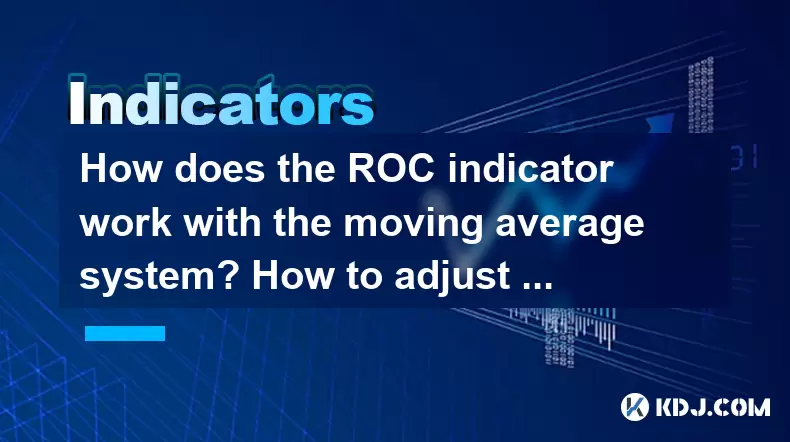
Understanding the ROC Indicator in Cryptocurrency Trading
The Rate of Change (ROC) indicator is a momentum oscillator commonly used in cryptocurrency trading to measure the percentage change in price between the current closing price and a previous closing price over a specified period. It helps traders identify potential trend reversals, overbought or oversold conditions, and the strength of a price movement.
In practice, the ROC value can be positive or negative. A positive ROC indicates that the price is higher than it was during the reference period, signaling bullish momentum. Conversely, a negative ROC suggests bearish momentum as the price has declined compared to the earlier period.
For example, if you're using a 14-day ROC, the formula calculates:
(Current Close - Close 14 periods ago) / Close 14 periods ago 100*
This metric becomes particularly powerful when combined with other technical tools like moving averages.
Integrating ROC with Moving Average Systems
Combining the ROC indicator with moving averages allows traders to filter out false signals and enhance decision-making accuracy in volatile crypto markets. The most common moving averages used are the Simple Moving Average (SMA) and the Exponential Moving Average (EMA).
One effective strategy involves plotting the ROC line alongside a signal line, which is essentially a moving average of the ROC itself. For instance, a trader might use a 12-period ROC and apply a 6-period SMA or EMA on top of it. When the ROC crosses above its signal line, it may indicate a buy opportunity. Conversely, a cross below could suggest a sell signal.
Another method involves aligning the ROC direction with long-term moving averages such as the 50-day or 200-day SMA. If the price is above the 200-day SMA and the ROC is rising, this reinforces the strength of an uptrend. On the flip side, if the price falls below the 200-day SMA and the ROC turns negative, it may confirm a downtrend.
Adjusting Strategy During High Volatility
Cryptocurrency markets are known for their high volatility, which can lead to misleading signals from traditional indicators. During such times, the ROC and moving average system must be recalibrated to avoid whipsaws and improve trade quality.
One adjustment involves increasing the time frame of both the ROC and the moving average. For example, switching from a 14-period ROC to a 21-period ROC can smooth out erratic readings. Similarly, lengthening the moving average used as a signal line — say from a 6-period EMA to a 9-period EMA — can reduce noise.
Another technique includes incorporating volatility filters such as the Average True Range (ATR). By measuring how much price fluctuates, ATR can help determine whether a ROC crossover is significant or just market noise. Traders may choose to ignore signals when ATR is above a certain threshold, indicating excessive volatility.
Additionally, traders should consider dynamic position sizing during high volatility. Instead of entering full positions based on standard ROC signals, they might scale in gradually as volatility stabilizes and confirms the trend.
Fine-Tuning Entry and Exit Points Using ROC and MA
To maximize profitability and minimize risk, traders often fine-tune entry and exit points by combining ROC divergence with moving average crossovers.
A bullish divergence occurs when the price makes a lower low, but the ROC forms a higher low, suggesting underlying strength. If this happens while the price is above a key moving average like the 50-day EMA, it can serve as a strong buy signal.
Conversely, a bearish divergence arises when the price records a higher high, but the ROC prints a lower high, indicating weakening momentum. This scenario becomes more reliable when the price drops below a major moving average.
For exits, traders can set trailing stops based on the distance between the price and the moving average. Alternatively, they can close positions when the ROC crosses back below its signal line, especially after a sharp move.
Some advanced traders also use multi-timeframe analysis. For example, they may look at the daily ROC and moving average setup to determine the overall trend and then switch to a 4-hour chart to pinpoint precise entries and exits.
Practical Examples in Crypto Trading Scenarios
Let’s take a real-world scenario involving Bitcoin (BTC) trading on a daily chart.
Suppose BTC is trading at $30,000, and the 50-day EMA is at $28,000, showing a clear uptrend. The 14-day ROC is rising steadily, indicating strong momentum. Suddenly, BTC surges to $33,000, but the ROC starts to flatten, even though the price continues upward. This is a classic sign of bearish divergence.
If BTC then closes below the 50-day EMA, and the ROC crosses below its 6-period EMA, it confirms a possible trend reversal. At this point, traders may decide to close long positions or initiate short trades.
Another example involves Ethereum (ETH) during a period of heightened volatility due to macroeconomic news. ETH's ROC spikes sharply, but the ATR is also elevated, suggesting the move might not be sustainable. In this case, traders could wait until the ROC settles and retests the EMA or SMA support levels before entering new positions.
These scenarios highlight how ROC and moving averages work together dynamically to guide decisions in live market conditions.
Frequently Asked Questions
How do I set up the ROC and moving average system on my trading platform?
Most modern platforms like TradingView, Binance, or MetaTrader allow users to add the ROC indicator directly from the indicators menu. After selecting the asset chart, navigate to the "Indicators" section, search for Rate of Change, and customize the period (e.g., 14). To overlay a moving average on the ROC, click on "Add to ROC" and select either SMA or EMA, adjusting the length accordingly.
Can the ROC and moving average strategy be applied to altcoins?
Yes, the ROC and moving average system works well across various cryptocurrencies, including altcoins like Solana (SOL), Cardano (ADA), or Dogecoin (DOGE). However, due to differing liquidity and volatility profiles, it's essential to test the parameters on each coin individually and adjust settings as needed.
What time frames are best suited for using ROC with moving averages?
While the strategy can be applied across all time frames, daily and 4-hour charts tend to offer the clearest signals for swing traders. Short-term traders may find success using 1-hour or 15-minute charts, but they must account for increased noise and false signals.
Is the ROC and moving average system suitable for beginners?
The system is relatively straightforward once the basic concepts are understood. Beginners should start by observing how the ROC behaves around moving averages without placing real trades. Practicing on demo accounts and reviewing historical charts can build confidence before transitioning to live trading.
Disclaimer:info@kdj.com
The information provided is not trading advice. kdj.com does not assume any responsibility for any investments made based on the information provided in this article. Cryptocurrencies are highly volatile and it is highly recommended that you invest with caution after thorough research!
If you believe that the content used on this website infringes your copyright, please contact us immediately (info@kdj.com) and we will delete it promptly.
- 2025-W Uncirculated American Gold Eagle and Dr. Vera Rubin Quarter Mark New Products
- 2025-06-13 06:25:13
- Ruvi AI (RVU) Leverages Blockchain and Artificial Intelligence to Disrupt Marketing, Entertainment, and Finance
- 2025-06-13 07:05:12
- H100 Group AB Raises 101 Million SEK (Approximately $10.6 Million) to Bolster Bitcoin Reserves
- 2025-06-13 06:25:13
- Galaxy Digital CEO Mike Novogratz Says Bitcoin Will Replace Gold and Go to $1,000,000
- 2025-06-13 06:45:13
- Trust Wallet Token (TWT) Price Drops 5.7% as RWA Integration Plans Ignite Excitement
- 2025-06-13 06:45:13
- Ethereum (ETH) Is in the Second Phase of a Three-Stage Market Cycle
- 2025-06-13 07:25:13
Related knowledge

How to confirm the effectiveness of the average price line support in the time-sharing chart?
Jun 17,2025 at 12:56am
Understanding the Time-Sharing Chart and Its RelevanceIn cryptocurrency trading, time-sharing charts play a crucial role in analyzing short-term price movements. These charts typically display price fluctuations over a specific period, often ranging from minutes to hours. Traders rely on them to make quick decisions based on real-time data. The average ...

What does it mean when the momentum indicator breaks above the zero axis?
Jun 17,2025 at 12:43am
Understanding the Momentum IndicatorThe momentum indicator is a technical analysis tool used to measure the speed or velocity of price movements in cryptocurrency markets. It helps traders identify potential trend reversals, overbought or oversold conditions, and confirms existing trends. The indicator typically oscillates around a zero line, with value...
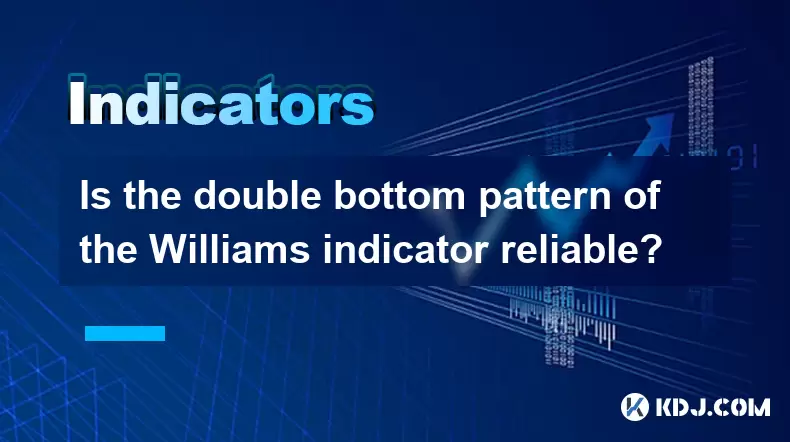
Is the double bottom pattern of the Williams indicator reliable?
Jun 17,2025 at 03:56am
Understanding the Williams Indicator and Its SignificanceThe Williams %R indicator, often referred to as Williams Percent Range, is a momentum oscillator used in technical analysis to identify overbought or oversold conditions in the market. Developed by Larry Williams, this indicator fluctuates between 0 and -100, with readings above -20 indicating ove...
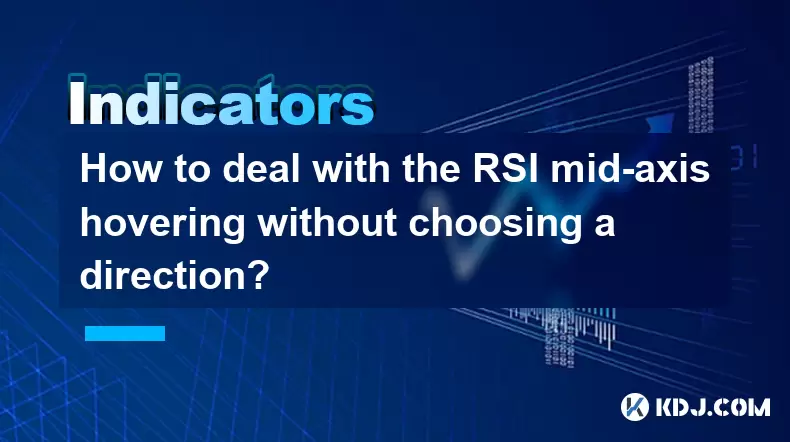
How to deal with the RSI mid-axis hovering without choosing a direction?
Jun 17,2025 at 02:02am
Understanding RSI Mid-Axis Hovering in Cryptocurrency TradingThe Relative Strength Index (RSI) is a popular momentum oscillator used by traders to assess whether an asset is overbought or oversold. In cryptocurrency markets, it's common for the RSI to hover around its mid-axis, typically at the 50 level, without showing a clear upward or downward trend....
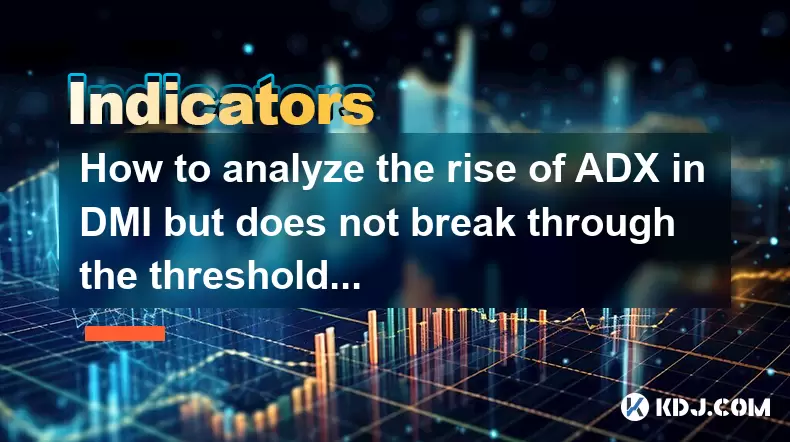
How to analyze the rise of ADX in DMI but does not break through the threshold?
Jun 16,2025 at 11:49pm
Understanding ADX and DMI in Cryptocurrency TradingIn cryptocurrency trading, ADX (Average Directional Index) is a technical indicator used to measure the strength of a trend. It works in conjunction with the DMI (Directional Movement Indicator), which includes two components: +DI (Positive Directional Indicator) and -DI (Negative Directional Indicator)...
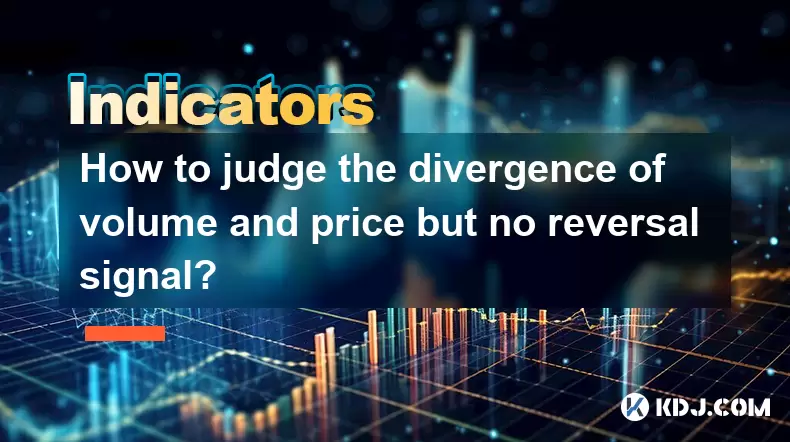
How to judge the divergence of volume and price but no reversal signal?
Jun 17,2025 at 12:28am
Understanding Volume and Price DivergenceIn the world of cryptocurrency trading, volume and price are two key indicators that traders monitor closely. Divergence occurs when these two metrics move in opposite directions. For example, if the price of a cryptocurrency is rising but its volume is declining, this could signal weakening momentum. However, it...

How to confirm the effectiveness of the average price line support in the time-sharing chart?
Jun 17,2025 at 12:56am
Understanding the Time-Sharing Chart and Its RelevanceIn cryptocurrency trading, time-sharing charts play a crucial role in analyzing short-term price movements. These charts typically display price fluctuations over a specific period, often ranging from minutes to hours. Traders rely on them to make quick decisions based on real-time data. The average ...

What does it mean when the momentum indicator breaks above the zero axis?
Jun 17,2025 at 12:43am
Understanding the Momentum IndicatorThe momentum indicator is a technical analysis tool used to measure the speed or velocity of price movements in cryptocurrency markets. It helps traders identify potential trend reversals, overbought or oversold conditions, and confirms existing trends. The indicator typically oscillates around a zero line, with value...

Is the double bottom pattern of the Williams indicator reliable?
Jun 17,2025 at 03:56am
Understanding the Williams Indicator and Its SignificanceThe Williams %R indicator, often referred to as Williams Percent Range, is a momentum oscillator used in technical analysis to identify overbought or oversold conditions in the market. Developed by Larry Williams, this indicator fluctuates between 0 and -100, with readings above -20 indicating ove...

How to deal with the RSI mid-axis hovering without choosing a direction?
Jun 17,2025 at 02:02am
Understanding RSI Mid-Axis Hovering in Cryptocurrency TradingThe Relative Strength Index (RSI) is a popular momentum oscillator used by traders to assess whether an asset is overbought or oversold. In cryptocurrency markets, it's common for the RSI to hover around its mid-axis, typically at the 50 level, without showing a clear upward or downward trend....

How to analyze the rise of ADX in DMI but does not break through the threshold?
Jun 16,2025 at 11:49pm
Understanding ADX and DMI in Cryptocurrency TradingIn cryptocurrency trading, ADX (Average Directional Index) is a technical indicator used to measure the strength of a trend. It works in conjunction with the DMI (Directional Movement Indicator), which includes two components: +DI (Positive Directional Indicator) and -DI (Negative Directional Indicator)...

How to judge the divergence of volume and price but no reversal signal?
Jun 17,2025 at 12:28am
Understanding Volume and Price DivergenceIn the world of cryptocurrency trading, volume and price are two key indicators that traders monitor closely. Divergence occurs when these two metrics move in opposite directions. For example, if the price of a cryptocurrency is rising but its volume is declining, this could signal weakening momentum. However, it...
See all articles

























































































